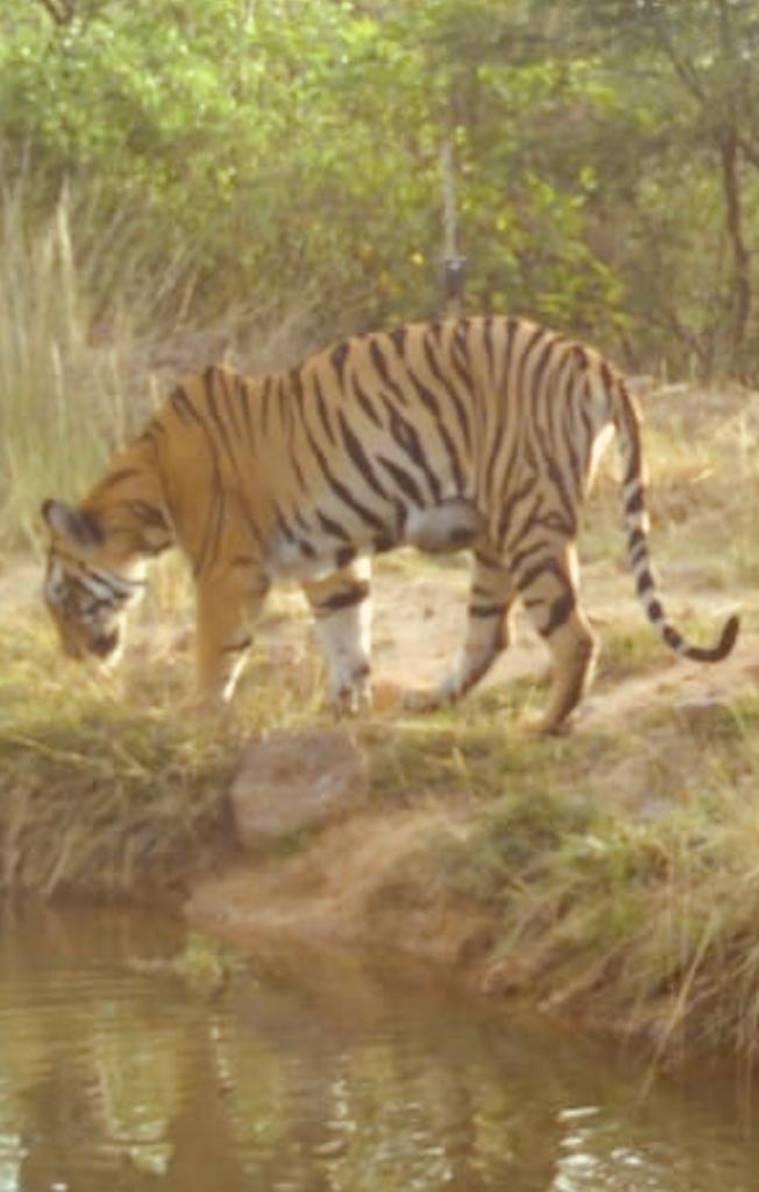 As it now appears, T2 had four cubs, with the separated one being the fourth one. (Express photo)
As it now appears, T2 had four cubs, with the separated one being the fourth one. (Express photo)
IN a first-of-its-kind experiment in the country, the Forest department is attempting to reunite a strayed tiger cub with its mother on the basis of a DNA matching of the tigress’s scat with the cub’s blood.
“We received the report of the DNA matching from the Centre for Cellular and Molecular Biology (CCMB), Hyderabad, recently. It has confirmed the mother’s identify as T2. We will be attempting to reunite the cub with the mother after fine-tuning the final procedure,” said Principal Chief Conservator of Forest (Wildlife) Nitin Kakodkar.
The female cub, aged about 3-4 months, was found hiding in a ditch by a farmer in Chichpalli forest of Chandrapur district on April 24. It was subsequently rescued by the Forest department team and was brought to the Transit Treatment Centre (TTC) of Chandrapur.
An initial attempt to reunite it with the mother didn’t succeed. Since there was presence of at least two tigresses moving with their cubs in the area, it posed a serious challenge before the authorities to reunite the cub with the mother. So, it was decided to do a DNA matching by taking scat samples from the area.
 The female cub, aged about 3-4 months, was found hiding in a ditch by a farmer in Chichpalli forest of Chandrapur district on April 24. (Express photo)
The female cub, aged about 3-4 months, was found hiding in a ditch by a farmer in Chichpalli forest of Chandrapur district on April 24. (Express photo)
An extensive camera tapping was conducted to identify the two tigresses – T1 and T2 – moving with three cubs each. As it now appears, T2 had four cubs, with the separated one being the fourth one. Scats of both the tigresses were collected and sent to CCMB along with the cub’s blood samples. The report was sought on an urgent basis.
“I have directed the additional PCCF (Wildlife) B S Hooda and field director of Pench Tiger Reserve Ravikiran Govekar to determine the exact modalities of going ahead with the fresh reunion attempt since it is a bit complicated process,” Kakodkar said.
He added that the long separation period would be a crucial factor in the mother accepting the cub. “Mother leopards do accept the cubs after such a gap but we are not sure about tigresses. We are going to give it a try,” Kakodkar said.
What lends strength to the Forest department’s conviction behind the experiment is also the strong possibility of the mother not abandoning the cub due to some weakness or deformity. “It most likely strayed out of the family since it looked in good shape when rescued. But that’s just the assumption as of now,” Kakodkar said.
Chandrapur honorary wildlife warden and member of the standard operating procedure (SOP) committee at Chandrapur for the cubs release, Bandu Dhotre, said, “The place where T2 stays for longer time has been identified. An attempt will be made to put the cub in a cage at the spot and observe the mother’s response towards it. Depending on that, we will take the call to release the cub from the cage.”
“This is the first such experiment to reunite a tiger cub with the mother after DNA matching. It will be a milestone if successful,” Dhotre added.
But, rains over the past two days have made the task difficult since the movement of big cats for water gets curbed due to easy availability of water. “We hope that after this spell of rain is over, Chandrapur returns to its normal summer temperature of around 45 degrees Celsius, giving us a brighter chance to take the experiment forward,” Dhotre said.